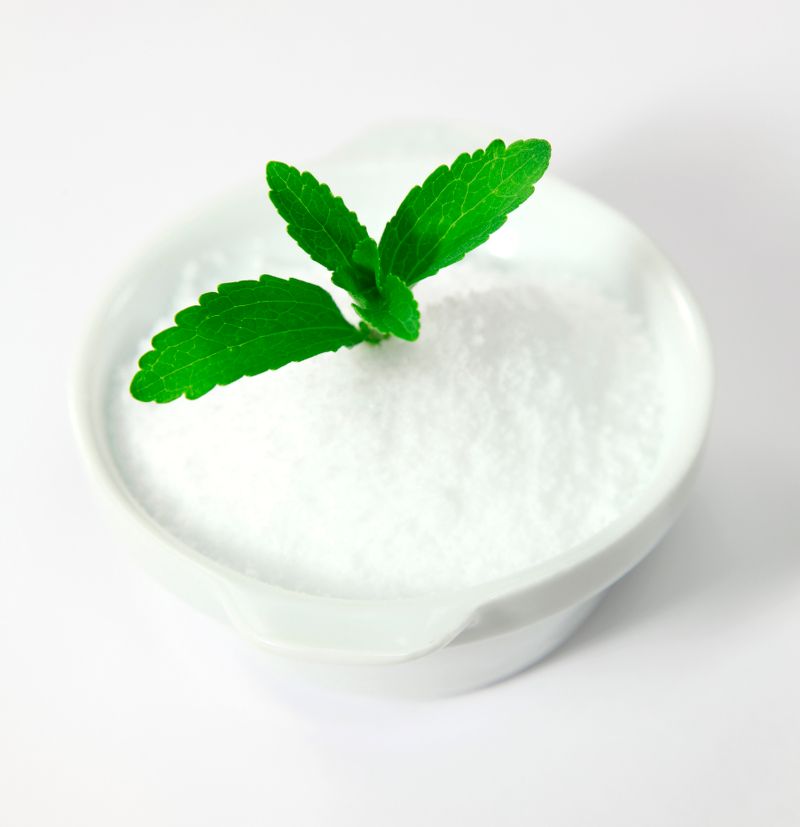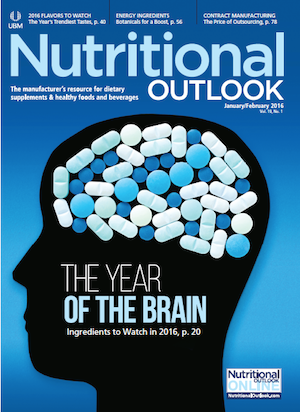2016 Ingredient Trends to Watch for Food, Drinks, and Dietary Supplements: Stevia
After tantalizing us with promises of less bitter or more scalable steviol glycosides, key stevia suppliers are now taking those glycosides commercial.
Photo © iStockphoto.com/Dirk Richter

If it seems like you’ve been listening to talk about next-generation stevia for years now, you’re not alone. After tantalizing us with promises of less bitter or more scalable steviol glycosides, key stevia suppliers are now taking those glycosides commercial.
Some of the biggest news came out of Cargill (Minneapolis) late last year. At the SupplySide West trade show in October, the company finally gave us the first taste of its first-ever fermentation-derived stevia sweetener, EverSweet. In 2016, Cargill is taking EverSweet to potential buyers whom will, one can imagine, include certain key beverage brands.
Cargill is not alone. Many stevia firms are now exploring fermentation as a less-expensive, resource-efficient way to obtain glycosides like Reb M and Reb D that are sweeter than Reb A yet present in much smaller quantities in the stevia leaf. With fermentation, these rarer glycosides can be cultivated in larger scale. Biotech firm Stevia First (Yuba City, CA) has been honing its own fermentation process. Last year, the company announced a new milestone: it can produce stevia without requiring glucose as an input for fermentation.
Cargill is marketing fermentation-derived stevia as “another choice” alongside traditional leaf-derived stevia. But will consumers buy into a stevia ingredient not grown in the field (and, some would say, not natural)? If EverSweet hits the mark, it could be just the green light that fermented stevia needs.
EverSweet success would also broaden the market for Reb M and Reb D as a whole, says Scott Fabro, global product development director, high-intensity sweeteners, Cargill. A stevia sweetener that is cost-efficient and more sugarlike than Reb A (Fabro describes EverSweet’s taste as a “more rounded” sweetness that avoids the “spiky” sweetness common of other stevia sweeteners) helps formulators more ably replace more sugar with stevia-and cut more calories. (Cargill says EverSweet can get to 100% sugar replacement in a carbonated soft drink-a level not previously possible for the company.) These capabilities “should allow a dramatic expansion in the use of Reb M and D, allowing food and beverage producers to create new classes of lower-calorie products that taste great and are affordable to all,” Fabro says.
Another leader, PureCircle (Oak Brook, IL), is producing Reb M commercially, but is still very much focused on stevia’s “natural” story of traditional leaf extraction. Last October, the company announced the next milestone in its business plan: a U.S. patent locking down leaf-derived Reb M for beverages. The market will be watching for products down the line, including any from PureCircle’s Reb M co-developer, Coca-Cola, which shares the new patent.
PureCircle is set to produce Zeta Reb M in high quantities. (The Reb M is part of PureCircle’s new Zeta line of stevia sweeteners for low- to no-calorie applications. In the December Zeta announcement, COO Jordi Ferre said that thanks to PureCircle's stevia agronomy program, the company is able to yield “over 20 times the amount of rare steviol glycosides versus other leaf available on the market.” Zeta sweeteners, which also include other glycosides, “provide the most sugarlike taste profile on the market for low-to-zero-calorie sweeteners," the firm claims. “Sweetening low-to-no-calorie applications like diet soft drinks has been especially challenging, so we are very excited by the impressive taste performance of our new Zeta family of ingredients,” adds Faith Son, vice president, global marketing and innovation, PureCircle. In 2016, the company will continue scaling up and adding to both its Zeta line and its Sigma line, also introduced last year and focusing on application-specific stevia solutions, such as for tea or dairy products.
With the table set for new glycosides, what can we expect in terms of launch activity in 2016? As always, the diet soda market is the one to watch. With U.S. soft drink sales diving, can stevia help the market recoup with healthier options?
Market researcher Innova Market Insights points to other categories where new stevia launches are high. Sports bars are “booming,” Innova says, with 16% growth in new global launches last year alone. In the United States, there is growth-albeit more modestly-in sports powders, iced tea, carbonated drinks, energy drinks, and chocolate bars.
READ NEXT
Ingredients to Watch 2016: Algae Ingredients for Food and Beverage
Jennifer Grebow
Editor-in-Chief
Nutritional Outlook magazine
jennifer.grebow@ubm.com

Prinova acquires Aplinova to further increase its footprint in Latin America
April 7th 2025Prinova has recently announced the acquisition of Brazilian ingredients distributor Aplinova, which is a provider of specialty ingredients for a range of market segments that include food, beverage, supplements, and personal care.

.png&w=3840&q=75)

.png&w=3840&q=75)



.png&w=3840&q=75)



.png&w=3840&q=75)























